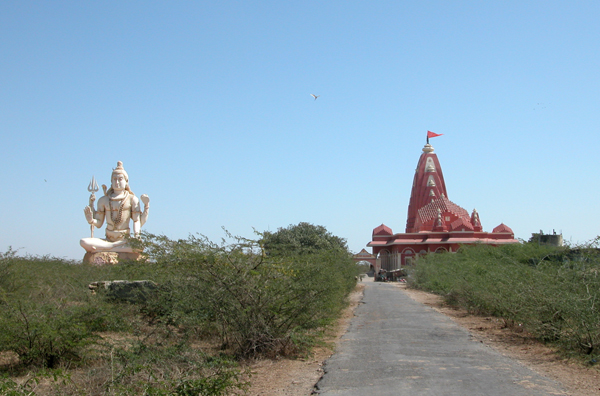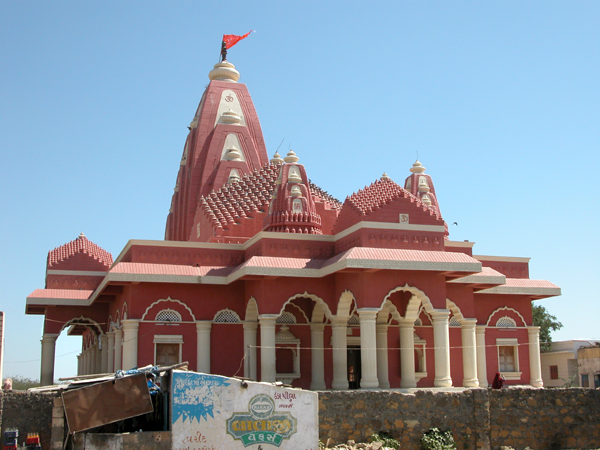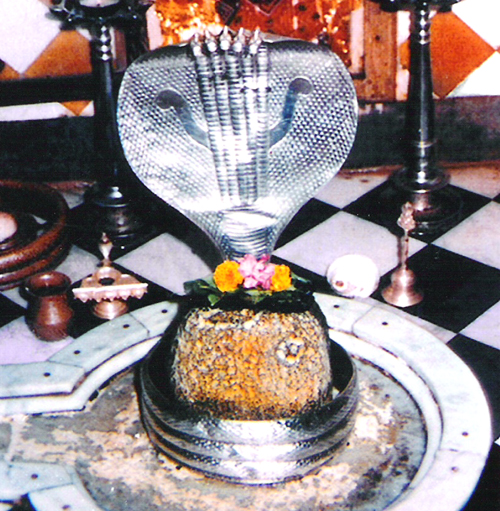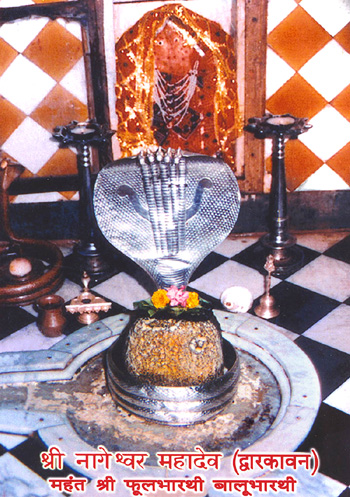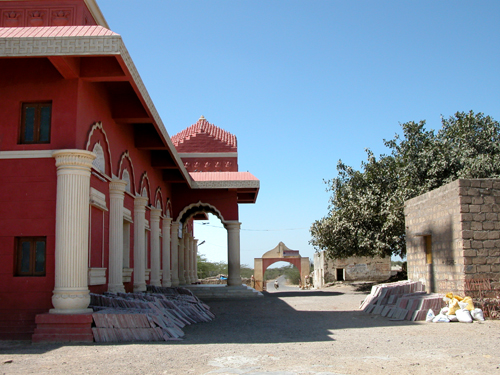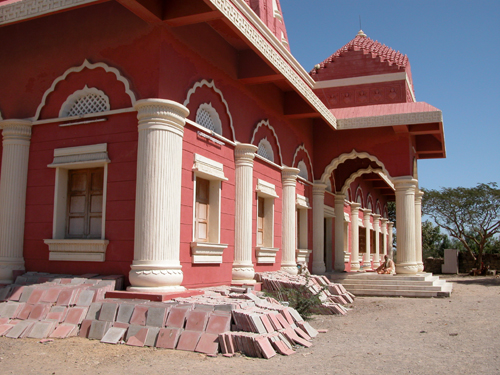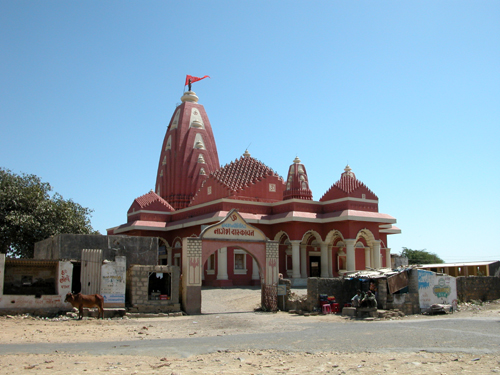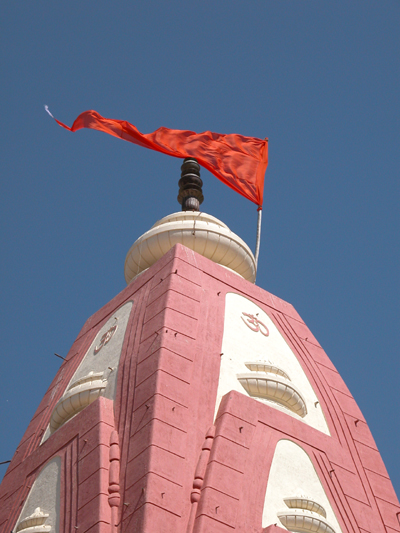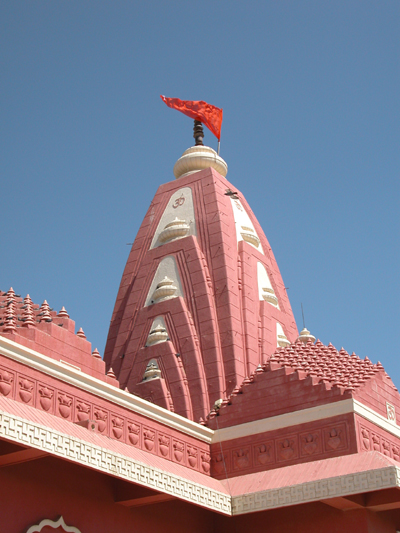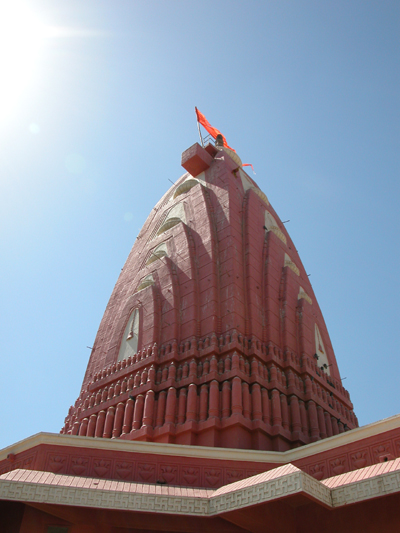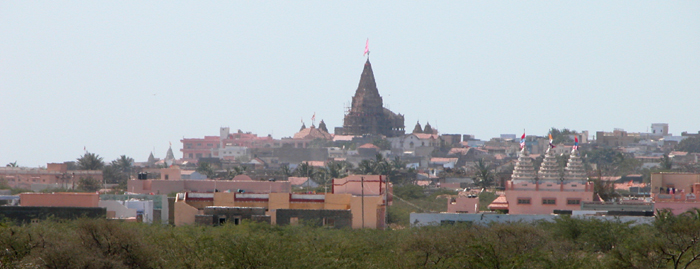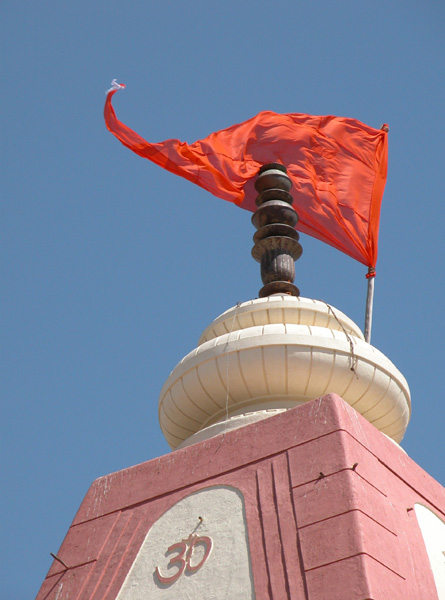 |
The Nageswara Jyotir Lingam Temple, Dwarka, Gujarat |
|
|
|
|
|
|
|
|
The Nageshwar Temple |
|
The Nageshwar Temple is situated near the west coast
of Gujarat, aprx.18 km north east of Dwaraka (*see below), once the living place
of Lord Krishna and now one of the four oldest, most famous and
holiest cities in India. Here Krishna is said to have set up his
capital after having fled form Mathura. The huge Shiva statue and the Nageswara Temple are the only constructions in a vast area. It is a very important pilgrimage centre and you can only reach the temple by a narrow road with scrubs growing as long as the eye can see. The temple is beautifully kept and the towering Sikhara welcomes you from a long distance. One of the absolut specialities of this place, is the magnificient Shiva statue next to the temple, which is one of the largest and most beautiful in India. The temple, built with stones, is said to have been built during the Pandava period. The four walls of the temple are very strong with large corridors. The spacious hall is supported by eight pillars. It has an oval shape. The Nageswara Linga is located in the small underground Garbhagriha. There is no Nandi idol in front of
the Jyotir Linga, but a separate Nandikeswara Temple at the back of
the main temple. There are
several smaller shrines in the main temple, 108 Shiva shrines and 68 other
shines are
supposed to be there. |
|
The
Nageswara
(Naganathar)
Jyotirlingam
is claimed to exist in 3 places:1. Dwaraka, the Nageswara Temple; 2. near Almora in Uttar Pradesh and
3.
Aunda (Honda) Naganath near Kakaparti, Vydhyanath. |
|
Legend |
|
A long story in the Shiva Purana narrates about how gods and demons were fighting in the costal area of Gujarat. "There once lived a Rakshasa (demon) called Daruka, who was extremely cruel. He tortured the sages and saints and destroyed their huts and Yagashalas (Places for rituals). A great Shiva devotee, Supriya was a merchant sailing with goods in a group of ships. When they reached Darukavanam, where Daruka lived with his wife Daruki, Daruka attached the ships and sentenced all the sailors to prison. Supria, even though he was in prison, did not stop worshipping Shiva and made all the people in the jail into devotees. He used to wear Bhasma (holy ash) and Rudrakshas (nut from Rudraksha tree) and chanted the Mantra "Om Namah Shivaya!". The Rakshasas did not like that and warned Supria not to worship Lord Shiva. Supria did not listen and were sentenced to death. He prayed Lord Shiva to protect him from these wild people and started to meditate on Shiva. The other merchants chanted in chorus: "Shiva, Shiva, Shiva!" At once there was a lightning like brilliance. The devotees opened their eyes to see the manifestation of a luminous Shiva Linga covered with the snake ornaments. In a moment the demons were reduced to ashes. Nageswara (another name of Shiva's) settled down there as the brilliant Jyotir Linga. The place was called "Darukavanam" and the Jyotir Linga was named "Naganath" or "Nageswara"." |
|
The Nageswara Jyotir Lingam |
|
|
| In visiting the Nageswara Temple
you enter into a spacious and light hall where you can buy Puja
materials, photos of the Jyotir Linga and souvenirs. If you like to
offer fresh flowers, it's good idea to bring them from town. The
Jyotir Linga shrine is to the left of the main entrance, 3-4 steps under floor level. It
is not permitted to take photographs inside, and especially not of
the Lingam. The Jyotir Linga is aprx. 40 cm high and with a diameter of aprx. 30 cm. It is a raw yellowish stone with sharpe edges - quite humble in apperance. The shrine is wonderfully light and with permission, you are able get near the Lingam. To touch the Lingam is a diffrent matter if you're not of Hindu origin, but with goodness of heart and a prayerful attitude, you newer know! If you brought a talisman, a Japa Mala or other item, you can also ask the priests to put it on the Lingam for sanctification. The Sivalingam is facing South, with the Gomukam facing East. There is a reason for this according to the legends: "Once Namdev, a disciple of Gurudev Vishoba Khoshar wanted to perform a Bhajan Kirtan in the temple of Naganath. He began singing in praise of the Lord. Some old Brahmins were chanting the Rudramantra just then. They felt disturbed by Namdev's singing and asked Namdev to go to the back of the temple and do his singing. So he did, sang at the backside of the temple and a miracle happened! Lord Shiva turned the temple around, so the Linga faced south and the Gomukham faced east, to be able to hear Namdev's singing! The Brahmins felt remorseful, went to Namdev and begged for his forgiveness."
It is
said that sometimes real snakes with their hoods open can be seen
standing guard on the Nageswara Linga. Whether they drink the milk
left in cups for them, nobody knows! |
|
The Spiritual significance of the word "Naganatha" |
| The word "Naga" (snake) symbolizes the nerves in the human body. "Naganatha" indicates the "Sushumna Nadi", the main energy channel in the human spine. The power of Kundalini, that lies dormant in the Muladhara Chakra (Root Chakra) at the bottom of the vertebral column, is also known as "Naganatha". The snake-like Kundalini power resembles the brilliance of the soul, i.e. Shiva. The Nagalingeswara is thus, as a Jyotirlinga, the symbol of spiritual brilliance. |
|
|
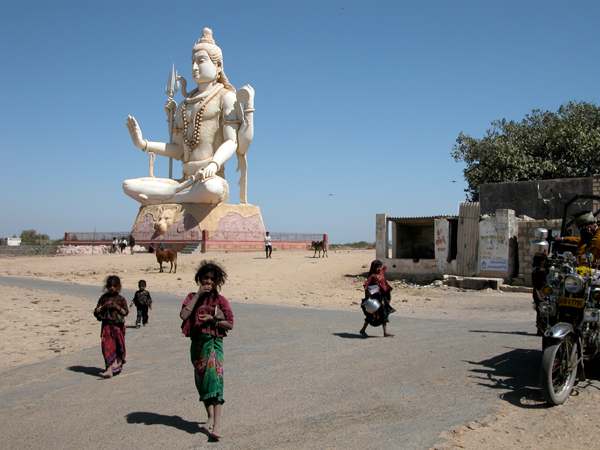
The impressing Shiva statue, is one of the largest
and most beautifull in India.
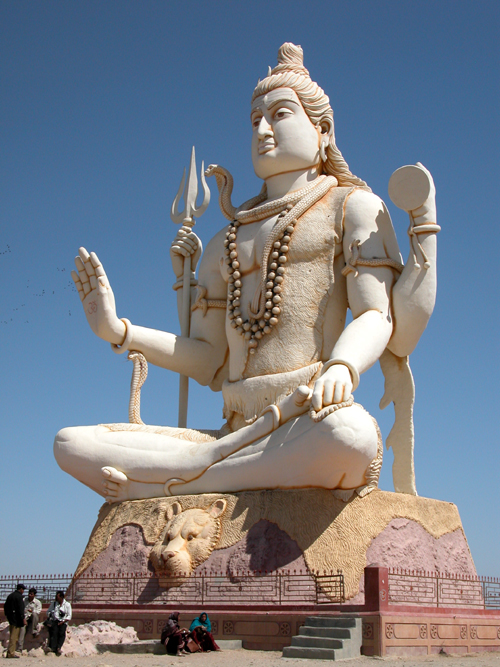
"Om Namah Shivaya!"
